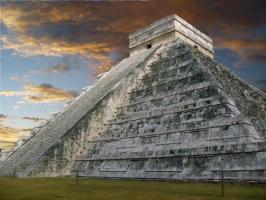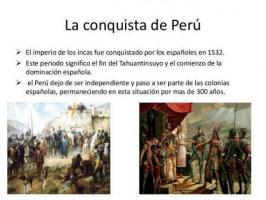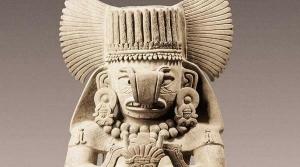Absolute monarchies of the Modern Age
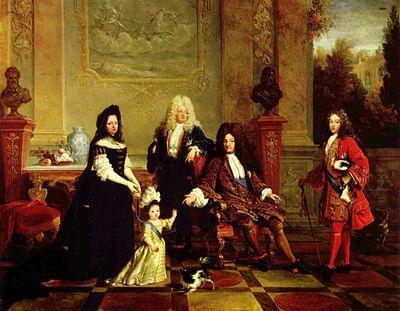
From the 16th to practically the 18th century, the predominant political form throughout Europe was the absolute monarchy, hereditary and centralized, legitimized by divine right. The highest representative of monarchical absolutism will be the French king Louis XIV (1638-1715), called the ‘Sun King’.
Next, in this lesson from unPROFESOR.com we are going to study a summary of absolute monarchies of the Modern Age that were founded on the class society of the so-called Old Regime.
Index
- Absolute monarchies: definition
- Society in absolute monarchies
- Louis XIV, the ‘Sun King’
- Spain, from the Habsburgs to the Bourbons
- England: the Tudors and the Stuarts
- Eastern Europe
The absolute monarchies: definition.
From the end of the Middle Ages to the 18th century, the form of government that characterized most of the European states was the absolute monarchy, in which the king controlled all the powers of the state and his legitimacy was considered by divine right, directing a centralized administration that soon suffered an important stagnation.
The monarch will have in his hands the executive, legislative and judicial power, the command of the army and the institutions, as well as the entire state administration. In addition, all those institutions that historically had been used to advise the king will be despised by him, as is the case with the courts.
It will be a system that will be based fundamentally on the nobility, that as the dominant group it will have the main positions and privileges, as well as the ownership of the land; In front of one bourgeoisie with little power yet and that will gradually take center stage.
In this other lesson we offer you a short definition of absolute monarchy.
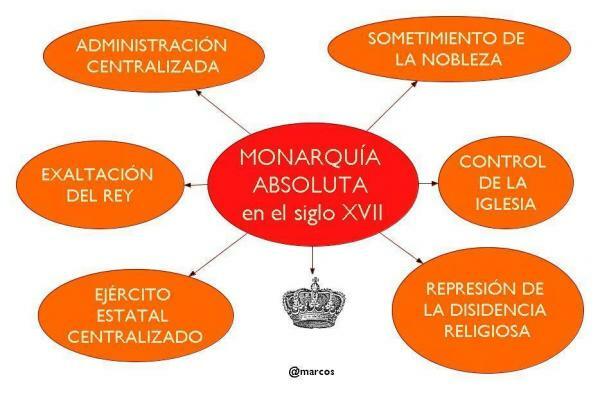
Image: Social Sciences 4th ESO - WordPress.com
Society in absolute monarchies.
In the absolute monarchies of the Modern Age the society was organized in estates with the particular characteristic that each one of them represented the social function that its members fulfilled. Three were these estates: the nobility, the clergy and the common state.
As we already pointed out, the nobility was the dominant group who carried out social control, held public office and lived on the income from his enormous patrimony. It was divided between high nobility, made up of counts, dukes, etc., and low nobility, which were basically knights.
Another privileged class was formed by the clergy, He also owned land and was in charge of religious and cultural issues. This group had a division similar to the nobility, with a high clergy, consisting of cardinals and bishops, and a low clergy, with friars, nuns, and priests.
The third state or plain state was constituted the people in general who had no privileges and he received a heavy tax burden. It was the majority of the population, and in it the peasants, owners or not, and the urban population, with the bourgeoisie, both financial and commercial, manual workers and marginalized.
Louis XIV, the ‘Sun King’
Of the absolute monarchies of the Modern Age, we have the clearest prototype in Louis XIV, King of France, whose government also served as a model for other sovereigns.
The French monarch reached the throne after a period of special instability in his country and in which the presidents of the Royal Council had great weight. For this reason, Louis XIV came to the throne with the firm conviction of ruling personally. He did so, relying on the belief of the time that kings ruled by divine right and received their power from God. For this reason, his government had to be just and personal. From this determination comes the phrase: "I am the state."
Although he relied on ministers, such as Colbert and Louvois, Louis XIV always had the last word, reaching the personalism to his own iconography, choosing a sun as an emblem and glorifying himself in works of art such as the ‘Sun King’.
The organization of a condition so centralized it gave rise to great regulation and the development of a huge bureaucracy, although some groups and provinces escaped central control since there were no material means for total domination.
The influence of Louis XIV on Europe it was also quite broad, since the sovereigns of other countries envied his authority and the successes he achieved in foreign policy. Absolutism spread and the reforms that the French monarch carried out in the bureaucracy, the army, the tax system and his very personal style of government were also copied.

Image: Slideshare
Spain, from the Habsburgs to the Bourbons.
In Spain, with the arrival of the Bourbons to power, embodied in the figure of Philip V (1700-1746), there is a further step towards a centralist model of the French type. The influence of the absolutism of Louis XIV was clear, taking into account that Philip V was his grandson, moving away the latter of the greater pactist character of the Habsburgs who, despite having monarchs with a marked personal tendency What Carlos V or Philip II, they continued to respect charters and institutions of self-government of the territories of Spain.
Felipe V will suppress through the Decrees of Nueva Planta Aragonese public law and that of Catalonia, Mallorca and Valencia, imposing Castilian law. But, in addition, it will carry out reforms for a great administrative centralization, giving little value to the Castilian courts, that they remained as nationals, and that in forty-six years of reign they only met four times and without legislative power.
Therefore, Felipe V draws a scheme of absolute monarchy where he legislated, controlled the administration and dispensed justice. This trend will continue with this royal house and will change with its own influences that will enter the 18th century and the arrival of Enlightened Despotism.
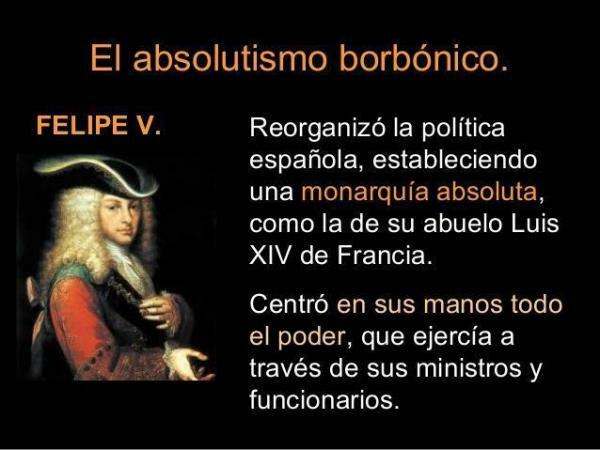
England: the Tudors and the Stuarts.
In England, real absolutism begins strongly with the Tudor dynasty. Henry VII (1485-1509) designs a centralized monarchical government in which he rejects Parliament, which in previous reigns he had been a weapon of control of power by the aristocracy, relying on a clique of advisers personal.
Your son Henry VIII (1509-1547) will continue the path marked by his father of political centralization, reaching his personal power to stand up to the church, giving rise to the Anglican schism and the transfer of control of the entire ecclesiastical apparatus. In addition, it will carry out an administrative reform that will cut the power to apply justice to the nobility. Elizabeth I (1558-1603) will dial another age of English absolutism, with a growing expansionism and a great impulse of mercantilism.
The arrival of the Stuart dynasty in England with James I (1603-1625) will lead to new tensions with Parliament, which will eventually lead to the dissolution of this body by Carlos I (1625-1649), in an attempt to restore absolutism, causing a civil war and the momentary end of the monarchy.

Eastern Europe.
Within absolute monarchies of the Modern Age that reigned in this part of Europe stands out in Russia the one established by Pedro I and in Prussia, that of Federico Guillermo I.
The Russian case is perhaps the most particular, since the absolute monarchy reached almost the 20th century. Peter the great (1682-1721) is perhaps the monarch who best fits the European-style absolutism, since he tried to carry out a centralized reform, reorganized the army and controlled the aristocracy with new titles and reincorporated the middle nobility into an army and administration modernized. The Church was also subjected to the state and the size of the bureaucracy was doubled.
On Prussia, his absolutist model is very particular since they were able to productively recycle the traditional representative institutions of the aristocracy when they no longer had power, being used as an instrument of the state central. Within the Prussian monarchs he stood out Frederick Williamby Hohenzollern (1713-1740), who based his power on the strengthening of the military-bureaucratic apparatus, with a General War Commissariat that served him to reign and control the entire state. He greatly strengthened the Prussian army, hence his nickname "King Sergeant."
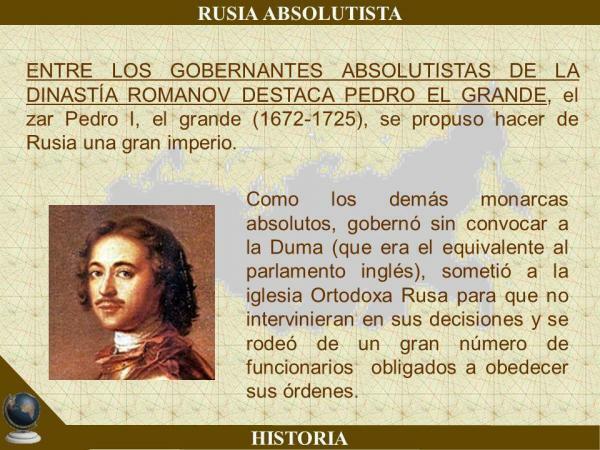
If you want to read more articles similar to Absolute monarchies of the Modern Age - Summary, we recommend that you enter our category of Story.

